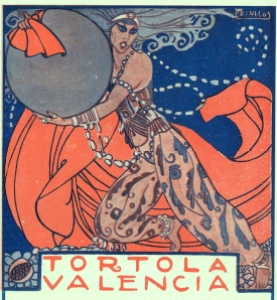
In February 1929, the Spanish dancer Antonia Mercé Luque, better known as La Argentina, arrived in the Philippines during her groundbreaking international tour. This pioneering journey marked a significant expansion of Spanish dance, introducing it to traditional stage circuits across the Americas as well as cities in Asia and Oceania. The Philippines, a former Spanish colony, represents a particularly intriguing case for analyzing the impact of her work. During her visit, La Argentina honored Philippine culture by creating a piece inspired by the cariñosa–a traditional Spanish colonial dance–which she subsequently integrated into her international repertoire.
La Argentina’s brief visit to Manila and the creation of her solo piece, La cariñosa, highlight how early 20th-century Spanish dance served as a colonial gesture, presenting Spanish dance as both a colonizing force and one that was itself influenced by colonial contexts. This solo stylized the Filipino national dance for Western audiences, ostensibly paying tribute to the Filipino people. However, it also obscured a deeper colonial power dynamic, framing the performance in the context of a shared Hispanidad—a constructed cultural policy that promoted a fictive unity in the postcolonial Philippines.

Like her earlier Latin American tour, La Argentina’s Asian tour should be viewed in the context of other contemporary Western dancers who were effectively conducting a type of fieldwork. Many of these dancers sought artistic and documentary inspiration from cultures considered exotic to Western audiences, primarily drawing from influences in India and Southeast Asia, as well as Indigenous American traditions. By the time La Argentina arrived in the Philippines, her artistic vision had already gained legitimacy within the dominant circles of Western culture. Her critical and public success, especially after founding her company, Les Ballets Espagnols–a name that mirrored Diaghilev’s Ballets Russes–in the autumn of 1927, further elevated her status. The acclaim she received from her peers further solidified her position as the foremost international exponent of Spanish dance.
This according to “Antonia Mercé ‘La Argentina’ in the Philippines: Spanish dance and colonial gesture” by Idoia Murga Castro (Dance research journal 54/3 [2022] 45–67; RILM Abstracts of Music Literature, 2022-16064).
Below is a performance of the cariñosa folk dance of the Philippines.









